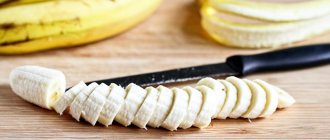Today, there are two systems for introducing first complementary foods to babies. These systems have their own characteristics, so parents should distinguish between them.
— The essence of pediatric complementary feeding is to introduce the required nutrients into the child’s body through the consumption of a number of foods. Pediatricians believe that already from 4-6 months the baby does not have enough calorie content from breast milk or formula.
— With pedagogical complementary feeding, the consumption of foods is associated with familiarization with food as such. Complementary feeding does not affect breastfeeding and is not associated with replenishing calorie intake. The baby gradually eats with his parents from the common table. When teaching complementary feeding, food is not pureed.
The World Health Organization remains neutral in recommending the concept of first feeding.
Pediatric complementary feeding is aimed at consuming foods to replenish the diet with nutritional components, since breast milk or formula is no longer enough for the baby.
In what order should foods be introduced into the diet?
(for a breastfed baby without any allergic manifestations)
4-5 months (vegetables for lunch, porridge for breakfast)
1 week – zucchini
Week 2 – cauliflower
Week 3 – broccoli
Week 4 – a mixture of three already familiar vegetables + vegetable oil
Week 5 – buckwheat dairy-free porridge
Week 6 – dairy-free rice porridge
Week 7 – dairy-free corn porridge + teaspoon butter
Week 8 – pumpkin, fruit puree – apple, pear, prune
6 months (a new product can be introduced every three days)
Meat – rabbit, turkey, veal puree
Children's cookies
This was the base. Now the baby has a full breakfast and lunch and you can introduce other foods in approximately this order, gradually replacing evening feeding with dinner.
7 months
egg yolk
8-9 months
cottage cheese, kefir, potatoes, carrots, beets, white bread, fish puree (2 times a week instead of meat), juice
12 months
berry puree
Norms for introducing complementary foods in the table
The table contains practical standards, according to WHO, for the introduction of first complementary foods for young children. Recommendations are for 90 days:
| Day | New Product | Gram | Tea spoon | Product introduced | Gram | Tea spoon | ||
| Introduce zucchini in the morning. Then finish breakfast as usual (breast milk, formula) until the baby is satisfied. | ||||||||
| 1 | Zucchini puree | 2-3 | 0,5 | |||||
| 2 | Zucchini puree | 6-8 | 1 | |||||
| 3 | Zucchini puree | 18-21 | 2-3 | |||||
| 4 | Zucchini puree | 35-42 | 6-8 | |||||
| 5 | Zucchini puree | 65-72 | 11-13 | |||
| 6 | Zucchini puree, 1 tsp. oils | 115-122 | 19-21 | |||
| 7 | Zucchini puree, 1 tsp. oils | 165-167 | 26-28 | |||
| Feeding with cauliflower. Prepare 2 purees. First introduce cauliflower, then zucchini. At lunch breast milk/formula | ||||||
| 8 | Cauliflower puree | 2-3 | 0,5 | Zucchini puree, 1 tsp. oils | 165-167 | 26-28 |
| 9 | Cauliflower puree | 6-8 | 1 | Zucchini puree, 1 tsp. oils | 161-163 | 25-27 |
| 10 | Cauliflower puree | 18-21 | 2-3 | Zucchini puree, 1 tsp. oils | 148-150 | 23-25 |
| 11 | Cauliflower puree | 35-42 | 6-8 | Zucchini puree, 1 tsp. oils | 128-131 | 20-22 |
| 12 | Cauliflower puree | 65-72 | 11-13 | Zucchini puree, 1 tsp. oils | 98-101 | 15-17 |
| 13 | Cauliflower puree, 1 tsp. oils | 115-122 | 19-21 | Zucchini puree, 1 tsp. oils | 48-52 | 7,0-8,1 |
| 14 | Cauliflower puree, 1 tsp. oils | 165-167 | 26-28 | |||
| Enter broccoli. Prepare 2 purees. First add broccoli puree, then cauliflower or zucchini puree. At lunch breast milk/formula. | ||||||
| 15 | Broccoli puree | 2-3 | 0,5 | Cauliflower puree, 1 tsp. oils | 165-167 | 26-28 |
| 16 | Broccoli puree | 6-8 | 1 | Zucchini puree, 1 tsp. oils | 161-163 | 25-27 |
| 17 | Broccoli puree | 18-21 | 2-3 | Cauliflower puree, 1 tsp. oils | 148-150 | 23-25 |
| 18 | Broccoli puree | 35-42 | 6-8 | Zucchini puree, 1 tsp. oils | 128-131 | 20-22 |
| 19 | Broccoli puree | 65-72 | 11-13 | Cauliflower puree, 1 tsp. oils | 98-101 | 15-17 |
| 20 | Broccoli puree, 1 tsp. oils | 115-122 | 19-21 | Zucchini puree | 48-52 | 7,0-8,1 |
| 21 | Broccoli puree, 1 tsp. oils | 165-167 | 26-28 | 165-167 | 26-28 | |
| Feed buckwheat porridge for breakfast. Then finish breakfast as usual (breast milk, formula) until the baby is satisfied. Give already tested vegetables for lunch - serving 165-167 g | ||||||
| 22 | Buckwheat | 2-3 | 0,5 | |||
| 23 | Buckwheat | 6-8 | 1 | |||
| 24 | Buckwheat | 18-21 | 2-3 | |||
| 25 | Buckwheat porridge, 1 tsp. drain oils | 35-42 | 6-8 | |||
| 26 | Buckwheat porridge, 1 tsp. drain oils | 65-72 | 11-13 | |||
| 27 | Buckwheat porridge, 1 tsp. drain oils | 115-122 | 19-21 | |||
| 28 | Buckwheat porridge, 1 tsp. drain oils | 165-167 | 26-28 | |||
| Feeding rice porridge for breakfast. Prepare 2 porridges. First add rice porridge, then buckwheat. Give already tested vegetables for lunch - serving 165-167 g | ||||||
| 29 | Rice porrige | 2-3 | 0,5 | Buckwheat porridge, 1 tsp. drain oils | 165-167 | 26-28 |
| 30 | Rice porrige | 6-8 | 1 | Buckwheat porridge, 1 tsp. drain oils | 161-163 | 25-27 |
| 31 | Rice porrige | 18-21 | 2-3 | Buckwheat porridge, 1 tsp. drain oils | 148-150 | 23-25 |
| 32 | Rice porrige | 35-42 | 6-8 | Buckwheat porridge, 1 tsp. drain oils | 128-131 | 20-22 |
| 33 | Rice porrige | 65-72 | 11-13 | Buckwheat porridge, 1 tsp. drain oils | 98-101 | 15-17 |
| 34 | Rice porridge, 1 tsp. drain oils | 115-122 | 19-21 | Buckwheat | 48-52 | 7,0-8,1 |
| 35 | Rice porridge, 1 tsp. drain oils | 165-167 | 26-28 | |||
| Feeding corn porridge for breakfast. Prepare 2 porridges. First add corn porridge, then buckwheat or rice. Give already tested vegetables for lunch - serving 165-167 g | ||||||
| 36 | Corn porridge | 2-3 | 0,5 | Buckwheat porridge, 1 tsp. drain oils | 165-167 | 26-28 |
| 37 | Corn porridge | 6-8 | 1 | Rice porridge, 1 tsp. drain oils | 161-163 | 25-27 |
| 38 | Corn porridge | 18-21 | 2-3 | Buckwheat porridge, 1 tsp. drain oils | 148-150 | 23-25 |
| 39 | Corn porridge | 35-42 | 6-8 | Rice porridge, 1 tsp. drain oils | 128-131 | 20-22 |
| 40 | Corn porridge | 65-72 | 11-13 | Buckwheat porridge, 1 tsp. drain oils | 98-101 | 15-17 |
| 41 | Corn porridge, 1 tsp. drain oils | 115-122 | 19-21 | Rice porrige | 48-52 | 7,0-8,1 |
| 42 | Corn porridge, 1 tsp. drain oils | 165-167 | 26-28 | |||
| Feeding with pumpkin. You give already tested porridges for breakfast - serving 165-167 g | ||||||
| 43 | Pumpkin puree | 2-3 | 0,5 | Cauliflower puree, 1 tsp. oils | 165-167 | 26-28 |
| 44 | Pumpkin puree | 6-8 | 1 | Zucchini puree, 1 tsp. oils | 161-163 | 25-27 |
| 45 | Pumpkin puree | 18-21 | 2-3 | Broccoli puree, 1 tsp. oils | 148-150 | 23-25 |
| 46 | Pumpkin puree | 35-42 | 6-8 | Cauliflower puree, 1 tsp. oils | 128-131 | 20-22 |
| 47 | Pumpkin puree | 65-72 | 11-13 | Zucchini puree, 1 tsp. oils | 98-101 | 15-17 |
| 48 | Pumpkin puree, 1 tsp. drain oils | 115-122 | 19-21 | Broccoli puree, 1 tsp. oils | 48-52 | 7,0-8,1 |
| 49 | Pumpkin puree, 1 tsp. drain oils | 165-167 | 26-28 | |||
| Feeding with an apple for breakfast. Give already tested vegetables for lunch - serving 165-167 g | ||||||
| 50 | Applesauce | 2-3 | 0,5 | Buckwheat porridge, 1 tsp. drain oils | 165-167 | 26-28 |
| 51 | Applesauce | 6-8 | 1 | Rice porridge, 1 tsp. drain oils | 165-167 | 26-28 |
| 52 | Applesauce | 14-18 | 2-4 | Corn porridge, 1 tsp. drain oils | 165-167 | 26-28 |
| 53 | Applesauce | 24-26 | 3-5 | Buckwheat porridge, 1 tsp. drain oils | 165-167 | 26-28 |
| 54 | Applesauce | 33-36 | 5-7 | Rice porridge, 1 tsp. drain oils | 165-167 | 26-28 |
| 55 | Applesauce | 44-50 | 7-9 | Corn porridge, 1 tsp. drain oils | 165-167 | 26-28 |
| 56 | Applesauce | 55-65 | 9-11 | Buckwheat porridge, 1 tsp. drain oils | 165-167 | 26-28 |
| Feeding millet porridge for breakfast. Give already tested vegetables for lunch - serving 165-167 g | ||||||
| 57 | Millet porridge | 2-3 | 0,5 | Buckwheat porridge, 1 tsp. drain oils | 165-167 | 26-28 |
| 58 | Millet porridge | 6-8 | 1 | Rice porridge, 1 tsp. drain oils | 161-163 | 25-27 |
| 59 | Millet porridge | 18-21 | 2-3 | Corn porridge, 1 tsp. drain oils | 148-150 | 23-25 |
| 60 | Millet porridge | 35-42 | 6-8 | Buckwheat porridge, 1 tsp. drain oils | 128-131 | 20-22 |
| 61 | Millet porridge | 65-72 | 11-13 | Rice porridge, 1 tsp. drain oils | 98-101 | 15-17 |
| 62 | Millet porridge, 1 tsp. drain oils | 115-122 | 19-21 | Corn porridge | 48-52 | 7,0-8,1 |
| 63 | Millet porridge, 1 tsp. drain oils | 165-167 | 26-28 | |||
| Complementary feeding with meat (rabbit), porridge. Give already tested vegetables for lunch - a portion of 165-167 g, applesauce 55-65 g | ||||||
| 64 | Rabbit meat | 2-4 | 0,5 | Buckwheat porridge, 1 tsp. drain oils | 165-167 | 26-28 |
| 65 | Rabbit meat | 7-9 | 0,5-1,5 | Rice porridge, 1 tsp. drain oils | 165-167 | 26-28 |
| 66 | Rabbit meat | 15-17 | 2-4 | Corn porridge, 1 tsp. drain oils | 165-167 | 26-28 |
| 67 | Rabbit meat | 21-23 | 3-5 | Millet porridge, 1 tsp. drain oils | 165-167 | 26-28 |
| 68 | Rabbit meat | 27-33 | 4-6 | Buckwheat porridge, 1 tsp. drain oils | 165-167 | 26-28 |
| 69 | Rabbit meat | 36-42 | 6-8 | Rice porridge, 1 tsp. drain oils | 165-167 | 26-28 |
| 70 | Rabbit meat | 45-53 | 7-9 | Corn porridge, 1 tsp. drain oils | 165-167 | 26-28 |
| Feeding prunes for breakfast, porridge. Give already tested vegetables for lunch - a portion of 165-167 g, applesauce 55-65 g | ||||||
| 71 | Fruit puree with prunes | 2-3 | 0,5 | Millet porridge, 1 tsp. drain oils | 165-167 | 26-28 |
| 72 | Fruit puree with prunes | 6-8 | 1 | Buckwheat porridge, 1 tsp. drain oils | 165-167 | 26-28 |
| 73 | Fruit puree with prunes | 14-18 | 2-4 | Rice porridge, 1 tsp. drain oils | 165-167 | 26-28 |
| 74 | Fruit puree with prunes | 24-26 | 3-5 | Corn porridge, 1 tsp. drain oils | 165-167 | 26-28 |
| 75 | Fruit puree with prunes | 33-36 | 5-7 | Millet porridge, 1 tsp. drain oils | 165-167 | 26-28 |
| 76 | Fruit puree with prunes | 44-50 | 7-9 | Buckwheat porridge, 1 tsp. drain oils | 165-167 | 26-28 |
| 77 | Fruit puree with prunes | 55-65 | 9-11 | Rice porridge, 1 tsp. drain | 165-167 | 26-28 |
| Complementary feeding with meat (turkey), porridge. Give already tested vegetables for lunch - a portion of 165-167 g, apple or prune puree 55-65 g | ||||||
| 78 | Turkey meat | 2-4 | 0,5 | Corn porridge, 1 tsp. drain oils | 165-167 | 26-28 |
| 79 | Turkey meat | 7-9 | 0,5-1,5 | Millet porridge, 1 tsp. drain oils | 165-167 | 26-28 |
| 80 | Turkey meat | 15-17 | 2-4 | Buckwheat porridge, 1 tsp. drain oils | 165-167 | 26-28 |
| 81 | Turkey meat | 21-23 | 3-5 | Rice porridge, 1 tsp. drain | 165-167 | 26-28 |
| 82 | Turkey meat | 27-33 | 4-6 | Corn porridge, 1 tsp. drain oils | 165-167 | 26-28 |
| 83 | Turkey meat | 36-42 | 6-8 | Millet porridge, 1 tsp. drain oils | 165-167 | 26-28 |
| 84 | Turkey meat | 45-53 | 7-9 | Buckwheat porridge, 1 tsp. drain oils | 165-167 | 26-28 |
| Feeding pears for breakfast. Give already tested vegetables for lunch - serving 165-167 g | ||||||
| 85 | Pear puree | 2-3 | 0,5 | Rice porridge, 1 tsp. drain | 165-167 | 26-28 |
| 86 | Pear puree | 6-8 | 1 | Corn porridge, 1 tsp. drain oils | 165-167 | 26-28 |
| 87 | Pear puree | 14-18 | 2-4 | Millet porridge, 1 tsp. drain oils | 165-167 | 26-28 |
| 88 | Pear puree | 24-26 | 3-5 | Buckwheat porridge, 1 tsp. drain oils | 165-167 | 26-28 |
| 89 | Pear puree | 33-36 | 5-7 | Rice porridge, 1 tsp. drain | 165-167 | 26-28 |
| 90 | Pear puree | 44-50 | 7-9 | Corn porridge, 1 tsp. drain oils | 165-167 | 26-28 |
| 91 | Pear puree | 55-65 | 9-11 | Millet porridge, 1 tsp. drain oils | 165-167 | 26-28 |
When introducing the first complementary foods, it is optimal for mothers to maintain lactation. Formula-fed babies can be given cow's milk up to 2 cups per day starting at 8 months. Ask your pediatrician for detailed nutritional plans.
WHO notes the essential points in the nutrition of young children:
— It is not so easy for a baby’s body to cope with the digestion and assimilation of new foods. Also, the food itself may have little nutritional value. From the beginning of complementary feeding, nutritional balance should be maintained. WHO representatives indicate that a large number of children under five years of age do not receive the required amount of nutrients. A balanced, comprehensive diet will provide the child with all the nutrients.
— The food is safe for the baby. Follow food preparation standards to minimize the occurrence of infectious diseases.
— Encourage the baby’s desire for unusual food. When your baby is interested in trying new foods, be sure to encourage his aspirations.
Treat him to a new product outside the scheme if the baby really wants it, except for those that are prohibited for objective reasons.
How to start complementary feeding?
WHO sequential algorithm for mothers:
- Calm. You should not rush, be attentive to the developmental features of the baby. Perhaps the baby will not like everything that his mother has prepared for him. Do not swear, scream or force-feed your baby. When feeding, speak patiently and gently to your baby, and make eye contact. Feed your baby in a comfortable and calm environment.
- Cleanliness. Make sure cutlery and plates are clean. Wash all vegetables and fruits. Immediately remove any leftover food from the table and wash the baby.
— Consistency in complementary feeding. It is necessary to introduce the baby to new food with small portions. If no reaction occurs, increase the amount of serving.
- Suitable food. Food should be adapted to the baby's age. As the child grows up, he will receive a variety of foods.
- Meals according to age. Feed your baby according to his age. The first complementary foods are given 1-3 times a day for a six-month-old baby. Then increase up to 4 times as the child grows. If a child has an appetite in addition to main meals, it is recommended to introduce 1-2 snacks.
- Cook according to your baby's tastes. Consider the foods your baby likes. If you have no desire for a certain food, then try to combine and change the recipe and cooking process.
- Drink enough fluids. Already from 12 months, mother’s milk is not enough, so do not forget to give the baby something to drink. Water, compote, weak tea, juice (without sugar) will do.
Love and patience are the basis of appetite
Under no circumstances should you force your baby to eat. It is worth starting complementary feeding if the baby himself is drawn to new food. Any violent actions can cause psychological trauma, followed by refusal to eat. Create a comfortable and friendly environment that encourages your baby to eat.
Parents must understand that the first feeding is a new stage in the baby's development. Remember to provide appropriate motivation for your child. Follow WHO expert recommendations for safe and proper complementary feeding. This way the baby will receive a balanced and healthy diet.
Another approach
In the UK, by the way, there is a completely different attitude towards first feeding. While we diligently grind vegetables and fruits into a liquid pulp, they prefer to start right away with pieces. Yes, yes, right at six months. And without any nibblers with mesh. Of course, these should not immediately be slices of apples, carrots and other hard vegetables. But the principle itself is this: you put small pieces of food on the child’s plate and allow him to eat on his own, actually sitting at a common table. Yes, it will be long and most likely not very clean. But local pediatricians are confident that in this way the baby will immediately develop correct eating behavior. He will be able to stop eating when he is already full, and also - this is a developmental issue - thus improving fine motor skills.
WHO recommendations
The World Health Organization gives general recommendations for introducing complementary foods, regardless of the baby's nutritional type.
Follow the safety rules for your first food experiments so as not to harm your baby’s health:
- Do not introduce a new product into your child’s diet if the baby is sick.
- For a baby who is not gaining weight well, the first complementary food will be porridge, for a healthy toddler - vegetable puree.
- Don't experiment with multi-ingredient dishes. To begin with, the baby should try all one-component purees.
- Start feeding with a new dish, and then supplement your baby with formula or breast milk.
- The baby must sit while eating.
- Offer your baby only homogenized foods. Even small pieces can cause a child to suffocate.
- As the first pedagogical complementary food, you can use diluted apple juice. If the baby’s body reacts normally, introduce the first vegetable or cereal product.
- To get rid of constipation, add a few drops of oil to vegetable puree, and prune puree to porridge.
- The new menu requires additional water consumption.
- a new food product into your baby’s menu only if you are completely sure that the child’s body has accepted the previous dish well.
Do not insist on complementary feeding if the child refuses to eat. Try again in a few days, change the product. The key to successful introduction of complementary foods is the baby’s good mood.
Useful video
Share this post
- Related Posts
- Methods and tips on how to clean a newborn baby's nose
- What is normal weight gain for newborns?
- How to take an antipyretic drug for infants
- Correct placement of the fetus in the uterus by week
- How to distinguish newborn acne from allergies and what are the methods for treating it
- How the baby develops and the mother feels at 38 weeks of pregnancy, what kind of discharge occurs and how labor begins
Complementary feeding for breastfeeding
Everyone knows that mother's milk is the best food for a baby during the first months of life. The World Health Organization recommends prescribing complementary foods to breastfeeding babies no earlier than 180 days after birth, that is, approximately half a year.
For a six-month-old baby, mother’s milk is no longer enough for development and growth. He needs additional nutrition to improve the functioning of the muscular, renal and nervous systems.











